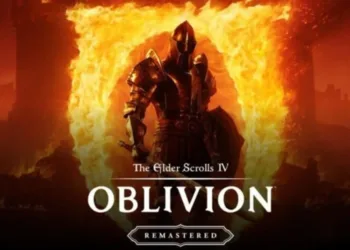“Marching Powder” opens its narrative in the midst of an unruly modern British scene—a raw, working-class setting where spontaneity and reckless abandon dominate everyday life. The film introduces us to Jack, a man whose existence is defined by chaotic indulgence and rampant self-destruction.
(There’s a peculiar charm in his defiance—a sort of calculated anarchy.) In this milieu, indulgence in violent escapades and uncontrolled hedonism reaches a crescendo until an unexpected judicial decree disrupts his tumultuous rhythm. Jack’s life, a perpetual cycle of misadventures, suddenly faces an enforced halt: a six-week ultimatum to reconsider his destructive habits.
The storyline charts his descent from a life unrestrained to a moment where fate appears to offer a sliver of redemption. The narrative does not shy away from the stark interplay between personal accountability and the unpredictable hand of circumstance.
An arrest becomes a pivot—an imposed pause that forces Jack to confront the inertia of his existence. Scenes of frenetic chaos are interlaced with quiet moments of introspection, creating a paradoxical portrait of a man caught between societal expectations and the siren call of his own debauchery.
The film thus becomes a reflective mirror for an era marked by its own self-contradictions, where every act of defiance is met with an inescapable demand for order.
Fractured Identities and Social Dissections: A Character Study
Jack emerges as an anomaly, a man whose existence oscillates between self-destruction and fleeting moments of self-awareness. His addictions—to substances, to violence—are not merely habits but rituals that punctuate his daily existence.
Jack is a man trapped in a cycle of behavior that offers temporary relief yet continuously undermines any hope of lasting change (a condition that might be termed “self-sabotaging euphoria”). His encounters are marked by aggression and a propensity for impulsivity, with each outburst hinting at an underlying recognition of his own fragility—even if he dismisses it with a shrug and a sneer.
Dani, his wife, serves as the practical counterweight to Jack’s unruly nature. Her attempts to reclaim a part of herself through aspirations like returning to art college are met with the relentless inertia of their life together.
Dani’s struggle is one of patience intermingled with exasperation—a silent narrative of love challenged by the constancy of chaos. Her presence in the film underscores a broader commentary on domestic disillusionment within a setting that prizes brute force over nuanced existence.
The father-in-law plays a dual role: a financial safety net and an unintentional moral guide. His support, while keeping the household afloat, also inadvertently enables Jack’s erratic conduct. In a household where fiscal security coexists with moral ambivalence, his character adds a layer of complexity to the interplay of personal responsibility and entitlement.
Kenny Boy, along with Jack’s assorted companions, injects a dose of anarchic energy into the narrative. Kenny Boy’s erratic behavior mirrors the dysfunction that pervades the family unit—a cycle of impulsivity that seems as inevitable as it is destructive. These supporting figures, though less developed than Jack, contribute to an ecosystem of self-destruction that mirrors certain historical moments of societal upheaval.
Masculinity, Class, and Addiction: The Social Fabric of ‘Marching Powder’
Jack’s character serves as a mirror to an unchecked male archetype—a man whose aggressive impulses and self-destruction are almost ritualistic. His behavior (a kind of self-imposed anarchy) raises questions about what happens when traditional male roles turn violent and impulsive.
In this film, his hyper-masculine stance is portrayed not simply as a series of excesses but as an ingrained identity shaped by societal expectations and historical echoes of disorder. His constant need for physical dominance and escapism through substance use appears to be both a personal failing and a reflection of a culture steeped in its own restless legacy.
The narrative casts a revealing light on the struggles of a working-class existence, where financial support can both cushion and condemn. The depiction of economic disparity—through the prism of a secure yet enabling figure—creates a scenario where personal accountability is repeatedly undermined by an easy safety net.
Here, the film makes a point about a social order that favors immediate gratification over long-term stability (a notion reminiscent of certain historical periods marked by rapid change and cultural shifts).
Addiction and violence recur as central themes, intertwining to form a pattern of behavior that seems almost inevitable for Jack and his cohorts. The continuous spiral of substance abuse and destructive actions is presented not merely as a personal failing, but as a symptom of deeper social malaise.
The challenge of transforming one’s life amidst such relentless pressures is painted with both a philosophical lens and a hint of dry humor, acknowledging the absurdity of expecting redemption in a system that often rewards chaos. This interplay of personal strife and social commentary provides fertile ground for rethinking the cultural narratives around male identity and societal structure.
Crafting Chaos: The Director’s Lens
Nick Love’s approach to storytelling in “Marching Powder” is unmistakable—an idiosyncratic mix of sardonic humor, raw aggression, and a penchant for the shockingly explicit.
His history of films with similar subjects serves as a kind of laboratory where he experiments with narrative violence and unrestrained dialogue (one might say he has a laboratory for unorthodox expressions). His method is less about refined subtlety and more about an almost reckless honesty that forces the viewer to confront the absurdity of modern existence.
The film’s opening animated sequence operates as a visual overture—a brisk, almost jarring invitation into the chaotic universe that follows. The choice to incorporate animation as a precursor to live action underscores Love’s commitment to blending mediums, thereby creating a dissonance that mirrors the internal conflict of the protagonist.
Camera work is spirited and energetic, with rapid cuts that suggest an underlying urgency (a stylistic decision that can be both exhilarating and disorienting). Editing oscillates between frenetic bursts and long, contemplative shots, each serving as a counterpoint to the film’s volatile narrative rhythm.
There is an evident infusion of contemporary digital culture into the film’s aesthetic. References to well-known gaming culture—most notably from a famed video game enterprise—inform both the visual style and the tone.
This integration is not merely decorative; it provides a cultural signifier for a generation that recognizes the blurred lines between virtual escapism and real-life excess. Even the dialogue, peppered with raw language and unexpected quips, reflects an urban vernacular that resonates with a disaffected audience.
At times, Love’s work appears to challenge conventional filmic standards by merging visceral imagery with deliberate, almost academic, considerations of societal decay (a juxtaposition that may provoke both admiration and irritation). His stylistic choices provoke thought while also delivering a measure of dark amusement.
Cutting Remarks & Vernacular Vignettes
The film’s humor operates as a counterweight to its more disquieting themes, injecting a certain dry wit that seems to emerge from the cracks of its grim narrative. Jack’s outrageous antics and the rapid-fire quips serve to momentarily lighten an otherwise abrasive commentary on modern life.
Specific scenes, where a sudden burst of irreverent one-liners punctuates a moment of chaos, feel engineered to provoke both shock and reluctant amusement (a sort of wry nod to the absurdity of it all). These instances are not mere comic relief; they function as critical markers that expose the latent contradictions in a society fixated on toughness and bravado.
The film’s dialogue, steeped in raw urban vernacular, offers a portrait of a culture that does not shy away from explicit speech. Memorable phrases and biting remarks contribute significantly to the development of its characters, painting a picture of individuals as rough-edged and unabashedly sincere.
The language employed is unapologetic, revealing societal attitudes that mirror real-life disillusionment and unfiltered self-expression. This choice in diction, though sometimes jarring, reflects a microcosm of modern British discourse—a mirror held up to a populace oscillating between pride and disaffection, all conveyed through a series of brisk, often startling exchanges.
Cultural Echoes and the Fallout of Excess
“Marching Powder” positions itself as a mirror to a society obsessed with unchecked indulgence. Jack’s downward spiral is interwoven with rare moments of dry levity, prompting a reexamination of personal failings set against the weight of societal pressure (a scenario that unsettles the complacent).
His struggles, marked by a relentless pursuit of physical and emotional release, prompt viewers to question whether such self-destructive behavior is an inevitable response to systemic neglect.
The film’s portrayal of male bravado and the corrosive effects of dependency paints a stark picture of modern discontent. It recalls historical epochs when unchecked ambition and personal excess collided with institutional apathy. The sharply defined character arcs contribute to a visual and narrative mosaic that portrays urban decay as both a personal affliction and a collective malaise.
The interplay between biting humor and grim realism provides brief reprieves, almost as if mocking the futility of seeking salvation in a world that rewards reckless behavior. In this context, the film challenges its audience to reflect on the price of defiance and the potential cost of change. Its stylistic choices, from dynamic camera work to jarring narrative shifts, open up a space for debate on social responsibility and inherited dysfunction.
The Review
Marching Powder
Marching Powder is a stark, uncompromising portrait of self-destruction and unchecked masculinity, mixing grim humor with unflinching social critique. Its relentless examination of urban decay and personal excess challenges viewers to confront uncomfortable truths about modern society, even if its intensity may not suit everyone. Overall, it presents a provocative cinematic experience that sparks debate as much as it entertains.
PROS
- Bold and unflinching portrayal of a self-destructive lifestyle
- Energetic and innovative visual style
CONS
- Intensity may be overwhelming for some viewers
- Heavy reliance on explicit language


















































